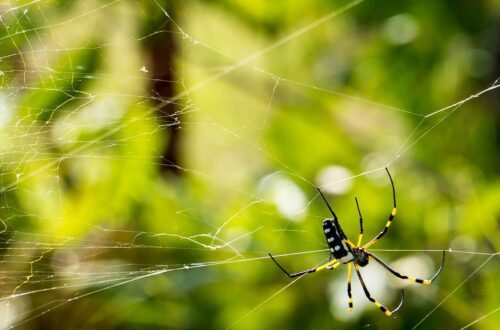6 Pantry Pests and What You Can Do About Them
Keeping your pantry well-stocked with food staples is essential to keeping your household running smoothly. However, it’s not just humans who enjoy the contents of your pantry. Unwanted pests such as ants, mice, and beetles can easily invade your space and feast on your food supply. They can cause damage to your food and contaminate it, making it impossible to consume. In this post, we will discuss 6 common pantry pests and what you can do to get rid of them. Let’s get started!

Ants are Common Pantry Pests
Ants are one of the most common pests that invade pantries. They’re attracted to sweet and sugary foods and can easily find their way into your food containers.
To prevent ants, store opened packs of food such as cereal, rice, and sugar in airtight containers. Seal any cracks or spaces around doors and windows, remove any food residue on counters and floors, and clean up any spills immediately. If you do see any ants, be sure to wipe down all surfaces with vinegar and water and lay out ant traps.
Removing Flour Beetles & Their Eggs
Flour beetles are small, reddish-brown insects that feed on flour, grains, and cereals. They lay eggs in the food, and the larvae will eat their way through it. To get rid of flour beetles, remove all contaminated food items and store items in airtight containers. You can also place bay leaves in your pantry, which will repel flour beetles naturally.
If you notice flour beetles too late and they have already infested your pantry, you will need to take more aggressive measures. Start by removing all contaminated food items and thoroughly cleaning your pantry with hot, soapy water. Vacuum the shelves and corners of your pantry to remove any remaining insects or eggs.
Pantry Pests Include Weevils
Weevils are small, brown pests that feed on grains, cereals, and nuts. To prevent weevils, store your food in airtight containers, and always check expiration dates before purchasing new food. To get rid of them, remove all contaminated food items and wash down your pantry shelves with vinegar and water to eliminate any larvae that may be hiding.
When dealing with pantry pests, it’s important to take preventative measures and regularly check for signs of infestation. However, if the problem becomes too severe or you are unable to get rid of the pests on your own, it may be time to call an exterminator.
Signs that it may be necessary to seek professional help include a large number of pests present in your pantry, persistent infestations despite your efforts to get rid of them, or difficulty identifying the type of pest and how to properly eliminate it. An exterminator, such as one at Area Wide Exterminators, will have the necessary knowledge and tools to effectively eradicate the pests from your pantry and prevent future infestations.
Preventative Measures Against Indian Meal Moths
Indian Meal Moths are a common pantry pest that feeds on grains, cereals, and nuts. To prevent Indian Meal Moths, store food in airtight containers. If you notice signs of them such as small white worms or webbing, immediately dispose of contaminated food and wash down your pantry shelves.
Indian Meal Moths are found all over the world and are a common pantry pest in homes, grocery stores, and warehouses. They can easily be brought into your home through contaminated food items from the store, making it important to regularly check for signs of their presence in your pantry. They also have a longer lifespan compared to other pantry pests, with some living up to 2-3 years, so it’s crucial to take preventative measures to avoid infestations.
Mice are Sneaky Pantry Pests
Mice are more commonly found in kitchens, but they can easily make their way into pantries. To prevent mice, seal off any holes and cracks leading into your home, and store food in airtight containers. If you notice signs of mice such as droppings or chewed packaging, set up mouse traps or hire a professional exterminator.
If you have successfully dealt with a mice problem, you will notice that there are no more signs of their presence in your pantry. This includes no droppings, gnaw marks on packaging, or any noises coming from inside the pantry. Additionally, if you have set up traps, they will remain empty and untouched. It’s important to regularly check for these signs even after dealing with a mice problem, as they can quickly return if preventative measures are not taken.
Cockroaches Will Feed on Almost Anything
Cockroaches are a common kitchen pest that will feed on just about anything they can find, including crumbs in your pantry. To prevent cockroaches, store food in airtight containers and keep your kitchen clean and free of clutter. If you notice signs of cockroaches such as droppings or egg casings, lay out cockroach bait or contact a professional exterminator.
While some pantry pests can be easily dealt with using DIY methods and prevention measures, others such as cockroaches are more difficult to eliminate. These resilient pests have the ability to survive in harsh conditions and can quickly reproduce, making it challenging for homeowners to get rid of them completely. In these cases, it’s best to call an exterminator first before attempting any DIY methods. A professional exterminator will have the necessary expertise and tools to effectively eliminate cockroaches from your pantry and prevent future infestations. They can also give you tips on how to keep your home pest-free in the long run.
Final Thoughts on Pantry Pests
Keeping your pantry pest-free requires a combination of prevention and regular cleaning. By storing your food in airtight containers, sealing off any cracks or holes, and cleaning up spills and crumbs immediately, you can prevent unwanted pests from invading. If you do notice signs of pests, it’s important to act quickly and remove any contaminated food items and clean your pantry shelves. By taking these steps, you can protect your food supply and keep your pantry pest-free.







One Comment
Pingback: